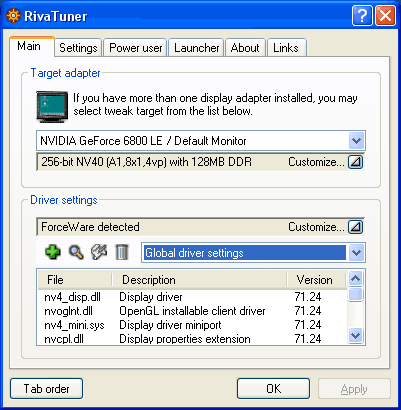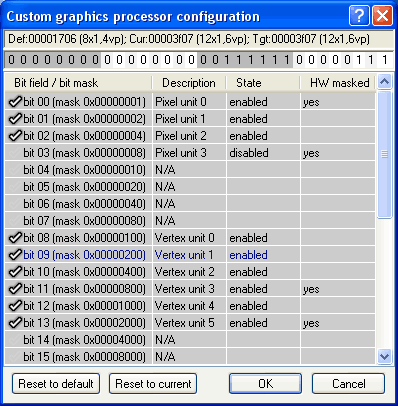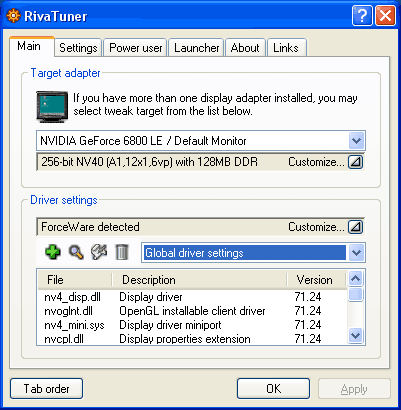All you need to know about your products!

| 3DNews Vendor Reference English Resource - All you need to know about your products! |
||||||
 |
||||||
|
|
||||||
NVIDIA GeForce 6600GT Roundup. Round II: AGPAuthor:Date: 25/01/2005 Part I. GeForce 6600GT in the make of Gigabyte, Galaxy, and LeadtekContinued from NVIDIA GeForce 6600GT Roundup. Round 1: PCI-E We are reviewing three cards based on the AGP GeForce 6600GT chip. We are not going deep into verbose reasoning and marketing research but get down straight to business especially because the topic of performance comparisons for AGP solutions in the mainstream sector (>200$) is currently more than urgent. Indeed, despite the abundance of reviews on PCI-E video cards "ready made to any taste, color, and wallet", the real percentage of owners of PCI-E systems is minor to date. For instance, just look at the "Your video card" voting (i.e. the card currently installed in your system) to see that merely 5.8% (!) of readers voted the PCI-Express. That's understandable and natural. That's just the very beginning of the hopefully triumphant path of the PCI-E. Some day it will win the hearts and systems of consumers, but not right now. But now let's answer the "question of the day" which is being discussed quite lively these days in all conferences - "which is best to choose - 6600GT, 9800 PRO, or 6800LE?!". A few remarks regarding the latter. While benchmarking, we tried to do what the card is actually purchased for - to unlock the pipelines which are there as many as 8x1/4 VP. The operation proved "almost successful" - the card was running trouble-free with the enabled 12x1/6 VP, which added a fantastic performance boost.    Certainly, we'll show you the results for 6800LE produced before unlocking the pipelines and after, in order to make the comparison most indicative. But these are "battles" between video cards of the same pack. As the contender to them we'll be using the well-known Radeon 9800 PRO. There is another spice to mention - all the three video cards based on the 6600GT core offer different nominal core/memory frequencies - from 500/900 in Leadtek's product to more attractive 500/1000 in Gigabyte's 6600GT, and the most trendy 525/1050 in Galaxy's nonstandard solution. We were not content with benchmarking at merely nominal frequencies, and investigated the overclocking capabilities for each of the cards. We are finishing the foreword at this optimistic note and get down to in-depth examination of all today's "guinea pigs". Gigabyte GeForce 6600GT LayoutPackage bundle
 Design and layout Like all the PCI-E analogs, the board is made on blue textolyte. First, what catches the eye is the nonstandard positioning of the GPU and video memory chips - at 45 degrees. That was done due to the process necessity because of the HSI bridge through which support for the AGP interface is provided. As regards the cooling system, Gigabyte took that very serious and done its best. The foot and the heat-spreading fins of the radiator on the GPU are made of copper, with the lid and the radiator that covers the bridge made of aluminum. The card is equipped with 128 Mb GDDR3 video memory, with a 128 bit data transmission bus, made as four Samsung memory chips of 2 ns access time, which is equivalent to 500 MHz (1000 MHz DDR) at which the memory on the card runs.  The GPU of GeForce 6600GT (NV43) runs at 500MHz as it should, and was made on the 41st week of 2004 , of revision А2.  Of note is the additional power connector which unlike its PCI-E analog is there on all 6600GT AGP video cards. And as usual the card offers a standard set of outputs - analogous, digital, and TV-OUT. Galaxy GeForce 6600GTPackage bundle
 Design and layout As usual, Galaxy presented a solution that is faster than the reference onto the market. The core/memory frequencies are overstated relative to the reference and amount to 525/1050MHz. Besides, the card offers faster memory, of 1.6 ns access time. This is equivalent to 625 MHz (1250 MHz DDR) of operating frequency. The nominal operating frequency 1050 MHz implies good overclocking capability of the memory. We will definitely find that out in the benchmarking session. The chips were made by Samsung, and all the four are positioned over the front side of the PCB.  The GPU of GeForce 6600GT (NV43) offers operating frequency 525MHz, made on the 41st week of 2004, has revision А2.  The GPU and the HSI bridge are positioned similarly to the previous card. But the cooling system merits a special consideration. Galaxy took a good care of future owners of the card through equipping the solution with a quality cooling system made as a radiator with a copper foot and heat-spreading fins covering the GPU, all the video memory chips positioned on the board's front side, and the HSI bridge. All this is attached with screws running through the board. Its very convenient design allows pressing the radiator to the GPU and tighten/loosen it if necessary.  The board is equipped with an additional power connector and two digital outputs. Leadtek A6600 GT TDH (GeForce 6600GT)Package bundle
 Design and layout The board is made on green textolyte standard for Leadtek's products. The PCB design is a precise replica of the previous boards. As the cooling system, Leadtek uses an aluminum radiator with a cooler of standard design (we have already seen solutions like that on 6600GT and 6600 PCI-E by Leadtek). The HSI bridge is cooled by a separate aluminum radiator. As regards the clock speeds of the card, all is pretty standard - 500/900 MHz. The GPU of GeForce 6600GT was released on the 36th week of 2004, of revision А2.  The memory capacity is also 128 Mb, a 128-bit data transmission bus, made up of four Samsung memory chips of 2 ns access time (which is equivalent to 1000 MHz DDR operating frequency). In this card, the standard memory operating frequency is 900 MHz, as we said earlier.  Finishing with the visual inspection of the card, we note the additional power connector, and set of outputs - analogous, digital, and TV-OUT. Now on to benchmarking. Test configuration For NVIDIA cards we used the most recent ForceWare 71.24 drivers, and for ATI cards - Catalyst 4.12 WHQL. Synthetic benchmarks    Gaming benchmarks          OpenGL tests   OverclockingIn overclocking, as usual, we used Riva Tuner. With additional blowing of cards by the PC housing fan and through replacing the standard thermal interface with "Alsyl-3", we were able to attain the following results for each of the cards under benchmarking:        |
|
|||||